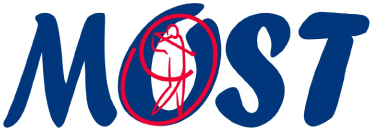Body Blade
Dolleys, rollers, medicine balls, gymnastic balls, light weights, heavy weights, and on and on it seems. Yes, there are a plethora of exercise options as well as exercise tools but no despair, not all these tools are necessary for every program or for every person but any one of them may be used to achieve a training response for a given purpose. Now here’s another name: the Body Blade.
Just as athletic endeavors use many types of muscle contractions so must a proper training program reflect these different functions. Muscles use 3 different types of contractions: isometric (where tension is produced but without movement of the body parts), concentric (tension that produces movement approximating body parts), and eccentric (tension that allows body parts to move apart under control). Golf, like other sports, incorporates all three and so all three should be trained for optimal results.
The body blade is one tool we use to produce a training effect that challenges the muscles and joints using all three muscle systems at once. The “blade” isn’t the only way to achieve this type of training but the sensitivity and shape of the blade often allows us more variability, particularly in regards to positioning. Essentially, the effort is to get the blade in motion and keep it in motion in a rhythmic motion that requires coordination and strength.
Although Jay is using the blade in a basic position at his side I often have players use specific golfing postures for the training. Even at his side, Jay has to use isometric contractions of his torso to keep his body from moving as he oscillates the blade in a continuous motion. Even small muscles in his low back are active in positioning the vertebrae for stable movement. At the same time, concentric and eccentric contractions are used by the upper extremity in a very rapid fashion. This rapid acceleration and then deceleration followed by another acceleration in the opposite direction not only places specific stress to the muscles and tendons of the limb but also to small nerves in the joints that help the muscles learn to contract faster. This latter benefit is especially helpful in the rehabilitation of things like tennis elbow and rotator cuff problems. One of the problems encountered in the rehabilitation of injuries is timing. Timing of contractions, that is. Research has shown that our body’s and our muscle’s ability to move in a synchronous, coordinated fashion is damaged with injury. This is true whether the trouble is a small area like the elbow or a bigger area like the low back. Often painfree function is not returned until this timing is made normal once again. Using a tool that provides an oscillating force is one way we can get the pros back in the swing of things rapidly.
